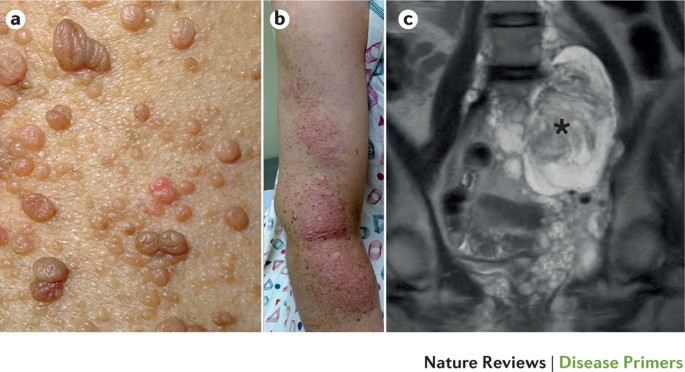
Neurofibromatosis Type 1 is a genetic disorder where the body produces abnormally large amounts of the protein called alpha-synuclein
This can occur in the brain or spinal cord.
This hereditary disorder, family history, having multiple affected family members, and being overweight are some of the common characteristics of type 1 neurofibromatosis. The most common symptom of type 1 neurofibromatosis is abnormal and excessive growths on the skin, especially on the face. and scalp. They can be sore or sore due to inflammation. The neoplasms are not cancerous and may be in clusters or on their own.
Abnormal growths also contribute to the loss of nerve cells, especially in children and adults with a family history of the disease. This loss of nerve cells results in weakness in the arms and legs and an inability to perform physical tasks such as chewing or walking. Some people suffer from involuntary limb movement.
Children with type 1 neurofibromatosis are usually found in early childhood when their brains develop at a normal rate and do not undergo any significant changes. However, they can show certain symptoms; for example: decreased concentration, increased impulsivity and, in some cases, hyperactivity. The cause of this condition may not yet be known, but various theories exist.
The diagnosis of Neurofibromatosis Type 1 is often made after the child has undergone several physical examinations, x-rays, MRI scans, blood tests, and imaging studies. Blood samples may be taken to determine if a certain infection is present or to rule out diseases that mimic Neurofibromatosis Type 1. It is important to remember that each child is different and the doctor will evaluate their symptoms and conduct the proper diagnostic procedures to make sure that the child is indeed having Neurofibromatosis Type 1.
There are several ways for the doctor to diagnose Neurofibromatosis Type I and II. The most common method is through neuroimaging where X-rays are used to look inside the brain and spinal cord. This can show the extent of damage that has been done to the areas of the brain. MRI scans are also able to show the location of the abnormalities on the spinal cord, nerves, bones, and the muscle fibers.

Other methods of diagnosis include imaging studies such as magnetic resonance imaging (MRI), computed axial tomography (CT) scan, and magnetic resonance imaging with magnetic resonance imaging (MRI/MRI). This method of diagnosis is used in children that have been suspected of having the disease. Biopsies may also be used to determine if tumors are present in the body or in the brain. The doctor may also order a bone marrow test to find out if a certain disease or infection is present in the body.
The treatment for Neurofibromatosis Type I and II is similar, except that the course of action is different. For children with this condition, it is necessary to treat the condition to reduce the risk of further tissue damage. The child may need surgery or chemotherapy or be given medications that can hinder nerve cell degeneration and eventually kill or slow down the growth of cells affected by the disease.
If you suspect that your child may be suffering from Neurofibromatosis Type I and/or II, you should get them tested and diagnosed right away. If these conditions are left untreated, they could result in the loss of the entire nervous system of the child. While there are several treatments available, it is best to seek the advice of a doctor who can help you choose the best course of action.
In some cases, surgery may be the only option for a child's life. The child may be able to go home after having a procedure, but if other factors such as their immune system, age, and other underlying health issues are present, the child may not be able to function normally at home, at school, and in social situations after surgery. It is important to remember that the condition affects almost every area of the child's life and they cannot work without supervision and care from an adult.
The condition may be treatable, but if the child has a family history of it, they are at risk for suffering from additional complications. The good news is that there are treatment options to help the child to lead a normal life once they are grown and they are no longer dependent on others.

